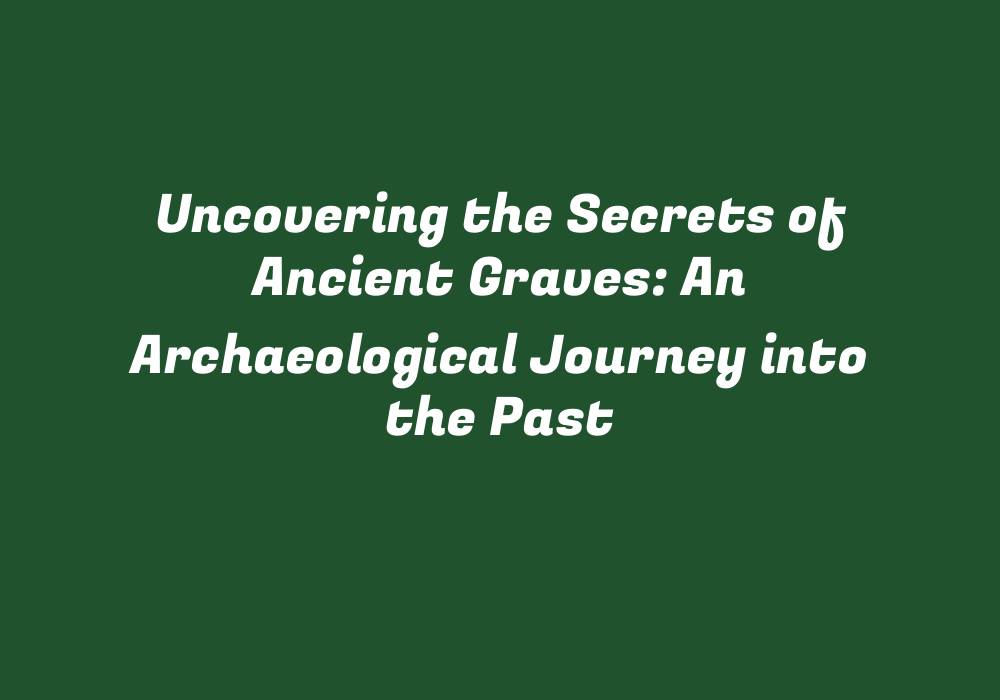Introduction
Ancient graves have long been a source of intrigue for archaeologists, historians, and the public alike. The study of these burial sites offers a unique insight into the lives of people who lived in different eras. Through meticulous excavation and research, it is possible to unravel the secrets that lie beneath their surface.
Preserving Cultural Heritage
The preservation of cultural heritage is a vital aspect of archaeology. It involves not only understanding how ancient societies functioned but also ensuring that the artifacts and knowledge uncovered during excavations are preserved for future generations. By examining these grave sites, archaeologists can learn about the customs, beliefs, and lifestyles of those who came before us.
Ethical Considerations
While archaeology aims to uncover and preserve historical information, it also involves ethical responsibilities. Respecting local traditions and ensuring that the graves are treated with sensitivity is essential when exploring these sites. Additionally, it’s crucial to obtain the necessary permissions and follow any guidelines or regulations put in place by the authorities.
Excavation Methods
The excavation process of an ancient grave site involves several steps to minimize damage while ensuring the extraction of valuable information. Archaeologists typically begin with a survey and documentation phase, during which they create detailed maps and records of the area. This helps in understanding the site’s layout, context, and potential significance. The next stage is the excavation itself, where archaeologists carefully remove layers of earth and sediments to uncover artifacts and features related to the grave.
Interpreting Artifacts
Artifacts found within an ancient grave can reveal important details about the deceased person’s life, their social status, and the beliefs of their community. Burial objects might include personal items, tools, or decorations that provide a glimpse into their daily lives. The arrangement of these artifacts in the burial chamber also offers clues about the burial customs of that particular society.
Ancient Grave Types and Features
There are several types of ancient grave sites, each with unique features. For instance, rock-cut tombs found in Egypt, Greece, and other regions offer a glimpse into the lives of individuals from different eras. These elaborate tombs often contain detailed decorations that depict scenes from the deceased’s life or represent their beliefs.
Burial Grounds
Ancient burial grounds, such as those found in prehistoric Europe and North America, provide valuable information about the spiritual practices of early human societies. These sites often consist of clusters of graves organized according to specific structures or patterns. Studying these arrangements can help understand how communities were structured, their social organization, and the ways they interacted with each other.
Conclusion
Archaeological exploration of ancient grave sites unveils a wealth of information about our past. These studies allow us to gain a deeper understanding of the beliefs, customs, and daily lives of people from various cultures and time periods. As we continue to excavate these sacred places, it is essential that we approach them with sensitivity, respect, and an open mind in order to preserve the rich history they represent.
Explore Further
For those interested in learning more about ancient grave sites and the secrets they hold, there are numerous resources available. From books on specific regions or historical periods to museum exhibits featuring artifacts discovered in various graves, these sources can provide valuable insights into our shared human history.
